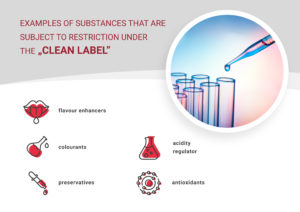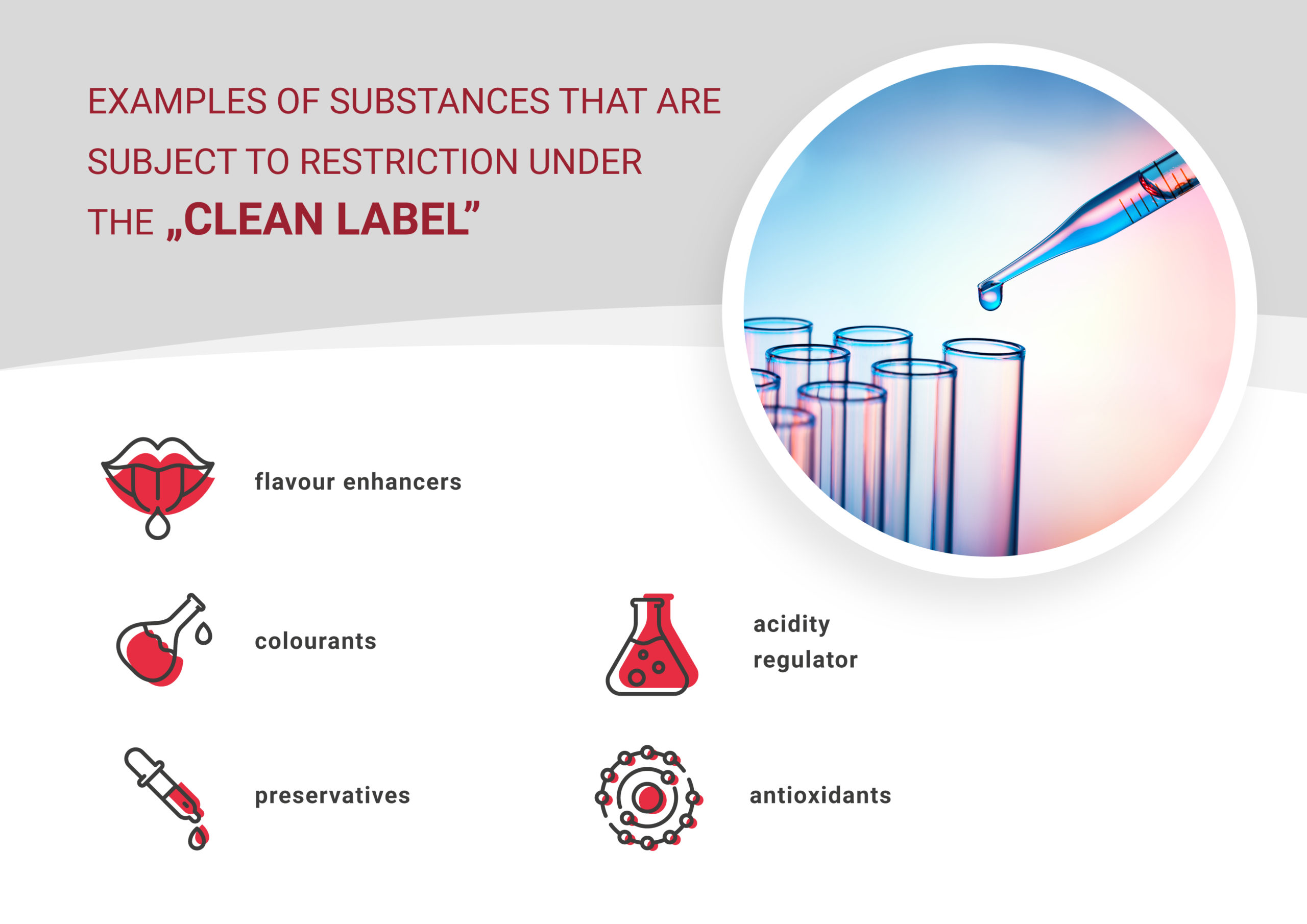The “clean label” is a modern market trend consisting of the return to products of content simple and easy to understand for the consumers. The buyers expect products without undesirable and very often unknown additives, as in some surveys even 86% respondents declare they set great store by simple content[1] and 75% of them are inclined to pay more for such products[2]. It is a huge challenge for manufacturers, as the production of quality food with long shelf life requires not only as clean as possible natural environment but also proper production conditions, as well as long-term experience and high level of professionalism. It just happens that the European manufacturers can easily offer exactly that.
The growing awareness of the consumers makes them increasingly more demanding also as far as the content of purchased meat products is concerned. The segment of “clean label” products grew from 2014 to 2020 at the rate of 12% year to year[3]. Such a great interest among the buyers has for many years forced the manufacturers to constantly expand their range of products. The “clean label” term has not been legally regulated as of yet; however, in general it is associated with products free of artificial additives and manufactured naturally or based on traditional recipes known to the consumers[4].
Reduction of unnecessary additives
You should keep in mind that the European Union is a pioneer in reducing unnecessary additives in food, especially meat; whereas decisions in this field have solid scientific grounds hammered out by the EFSA (European Food Safety Authority)[5]. A very important aspect is the maximum reduction of raw materials based on genetically modified organisms[6]. Aside from GMO raw materials, the EU legislation provides for a variety of limitations on the use of additives [7] or colourants[8]. In spite of the increased organoleptic value of products on sale, these additives can have an adverse effect on the health of the consumers, which is why they are banned. One of the examples is the impact of colourants on the health of children, as observed during the tests carried out in the Great Britain at the University of Southampton. It turned out that the mixture of several synthetic colourants and sodium benzoate contributes to hyperactivity in children. The said tests have made their mark on the European legislation, leading to the obligation of placing a warning with substances contained in the food product on its’ label[9]. What is more, the consumers have become more conscious of ingredients in products and choose the ones which do not harm their health. This is how the “clean label” concept arose. The activity of the European Food Safety Authority and variety of publications on this issue have begun to draw the consumers attention as regards the impact of added ingredients on health and well-being.
What can be removed?
There is a variety of additional substances used in food processing. The list includes for instance: colourants, flavour enhancers, preservatives, acidity regulators, antioxidants, stabilisers, emulsifiers, thickeners and gelling agents. Nitrites in meat preparations are used as preservative additives to prevent the production of botulinum toxin have a negative impact on our health, when used in excess.
The consumption of colourants used to be quite high. This can also be observed in the instance of products with a high fat content and inferior formulation, such as wieners or mortadellas. The low myoglobin content in the raw material used for production very often hinders achieving the proper colour of the product. In such cases, the use of a colourant or mixture of colourants allows to obtain the colour close to the typical colour of meat. The use of colourants inter alia, in finely minced sausages enables to mask the fat partially in the cross-section. Such practices are still common in regions of the world with less extensive legislation as regards food; the European Union has permanently introduced a number of solutions regulating the content of salt[10], colourants,[11] or polycyclic aromatic hydrocarbons in meat[12].
Constant evolution
The “clean label” definition is subject to constant evolution, whereas the consumers tend to interpret this term in various ways. For some the “clean label” products are natural, for others the ones with simple content. Irrespective of the interpretation, the European Union will remain the leader in providing solutions ensuring simple and beneficial content of products.

- [1] https://www.fona.com/1120cleansurveyreport/
- [2] https://www.foodbeverageinsider.com/market-trends-analysis/75-consumers-will-pay-extra-clean-label-ingredients
- [3] https://www.foodbeverageinsider.com/market-trends-analysis/75-consumers-will-pay-extra-clean-label-ingredients
- [4] https://www.researchgate.net/publication/340352453_Clean_label_as_one_of_the_leading_trends_in_the_meat_industry_in_the_world_and_in_Poland_-_a_review
- [5] https://www.efsa.europa.eu/en/efsajournal/pub/515
- [6] https://eur-lex.europa.eu/legal-content/PL/TXT/PDF/?uri=CELEX:32003R1829&from=EN
- [7] https://www.efsa.europa.eu/en/efsajournal/pub/4786
- [8] https://www.efsa.europa.eu/en/efsajournal/pub/2004
- [9] https://www.efsa.europa.eu/en/news/efsa-evaluates-southampton-study-food-additives-and-child-behaviour
- [10] https://eur-lex.europa.eu/legal-content/EN/TXT/PDF/?uri=CELEX:32018D0702&rid=4
- [11] https://www.efsa.europa.eu/en/press/news/091112
- [12] http://www.medycynawet.edu.pl/images/stories/pdf/pdf2020/082020/2020086373.pdf
